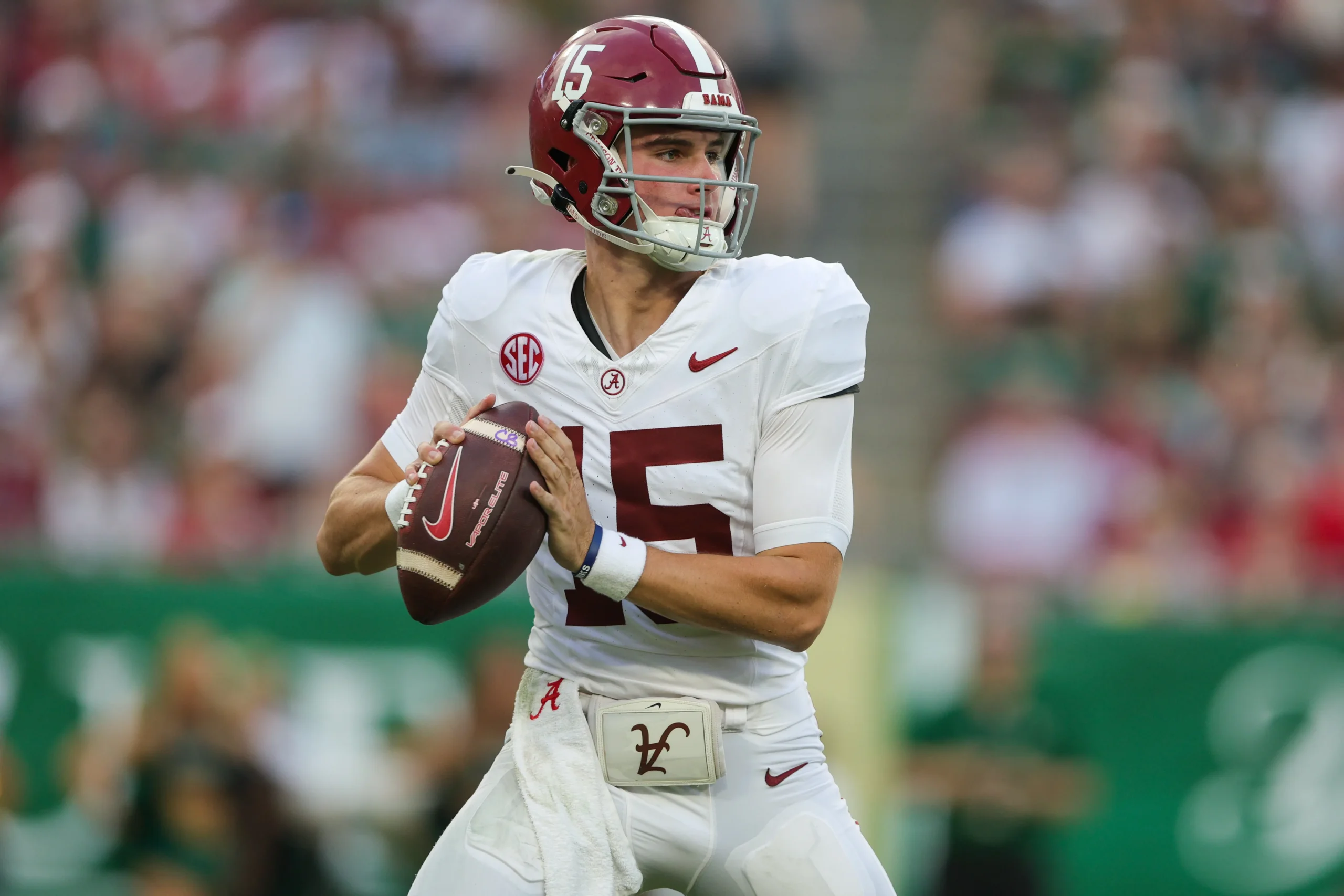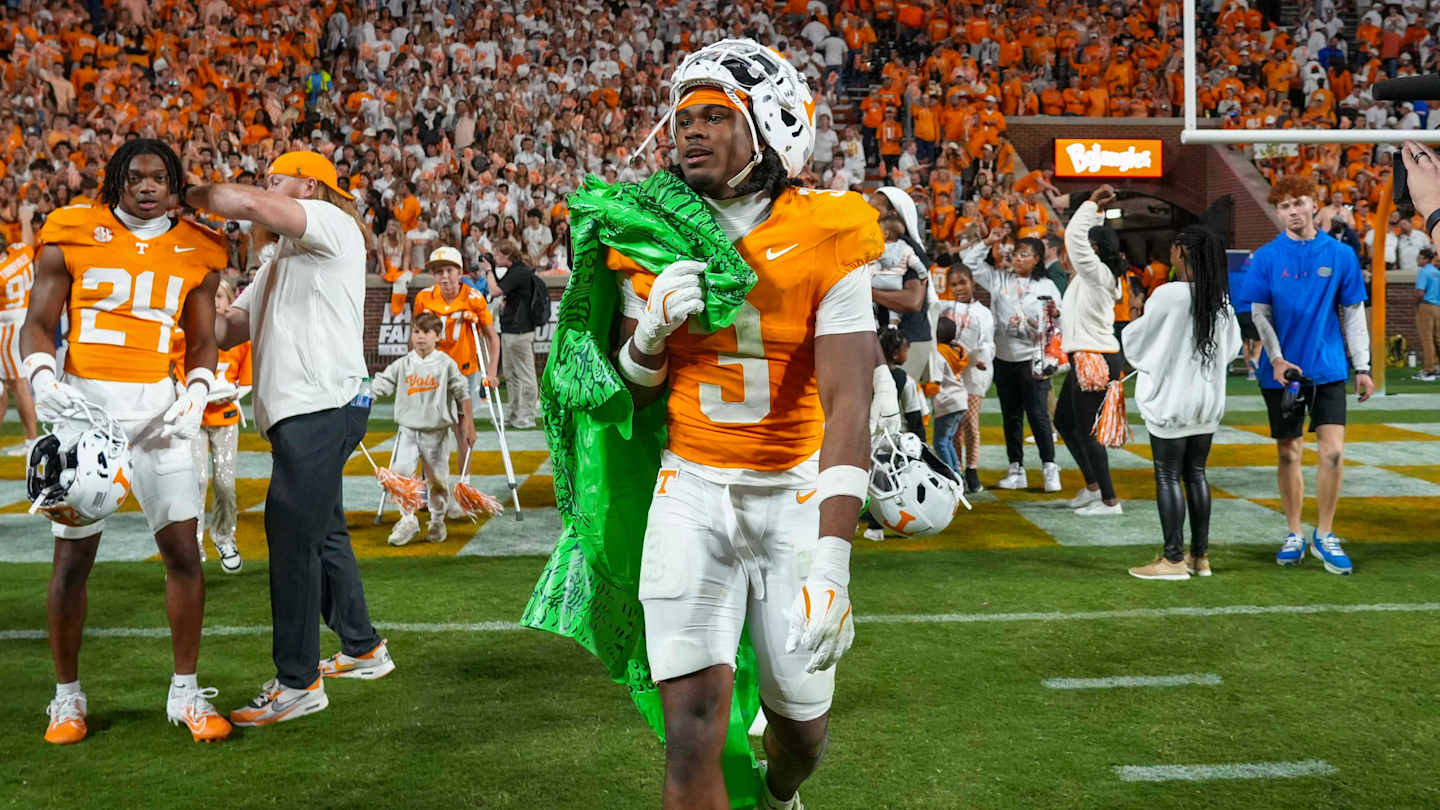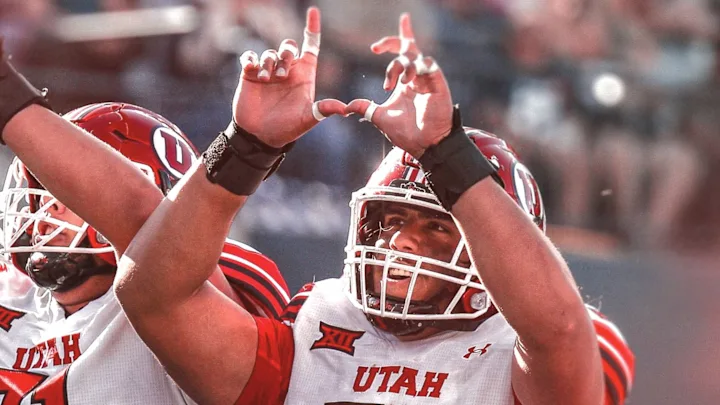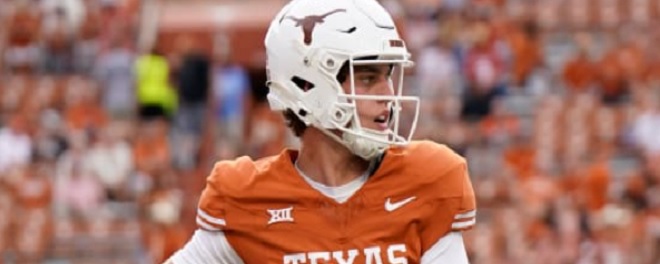By Charlie Campbell.
Send Charlie an e-mail here: [email protected]
Follow Charlie on Twitter @draftcampbell for updates.
This page was last updated March 17, 2017. Follow me @walterfootball for updates.
Position Review: Guards
Guard Class
Early-round talent: C
Mid-round: C+
Late-round: C
Overall grade: C
2017 prospects vs 2016
Josh Garnett
Forrest Lamp
Dan Feeney
Dion Dawkins
Cody Whitehair
Ethan Pocic
Max Tuerk
Joe Thuney
Taylor Moton
Parker Ehinger
Jordan Morgan
Willie Beavers
Pat Elflein
Connor McGovern
Dorian Johnson
Joe Dahl
Guard was a strong position in the 2015 NFL Draft, but the past two years have been rather average. This year, Lamp has a shot at being a late first-round pick and should go in the second round if he doesn’t go on Thursday night. There could be five guards who go in the first two days of the 2017 NFL Draft.
If you were to merge the two classes, I think Lamp and Garnett are about equal as prospects, and they should have a similar position of where they get drafted. Feeney and Dawkins are better athletes with more strength than Whitehair. Whitehair was solid as a rookie after moving to center. Pocic could be a similar player to Whitehair. Moton is a third-round caliber guard like Tuerk and Thuney. Morgan and Elflein are fourth-round caliber players like Ehinger and Beavers. Dorian Johnson could be a fifth-round pick like McGovern and Dahl.
Safest Pick: Forrest Lamp, Western Kentucky

I think Lamp would be at his best position in the NFL at center. He is a technically sound blocker who should be reliable in the ground game and in pass protection. From a skill-set perspective, Lamp is a technician with his pass-blocking projecting very well to the NFL. He has good hand placement and excellent knee bend. He plays with good leverage and doesn’t get caught reaching after defenders. His knee bend helps him to hold his ground, and his hand placement helps him to sustain blocks. In the ground game, Lamp gets to the spot, executes his blocks well, and is able to get the job done. He isn’t a true bull dozer who blasts defenders off the line, but he can turn linemen to open holes. He also is good at cutting defenders. Lamp would be a great fit in a zone-blocking scheme at guard or center.
Looking back, it is too early to pass any judgement on Tretola. Scherff is a good guard for the Redskins. Su’a-Filo is a starter for the Texans who had some struggles but played much better in 2016. Warmack was a bust, and I was wrong about that projection.
Previous Picks:
2016: Sebastian Tretola
2015: Brandon Scherff
2014: Xavier Su’a-Filo
2013: Chance Warmack
Biggest Bust Potential: Pat Elflein, Ohio State

Elflein could get picked on the second day of the 2017 NFL Draft, and I think he could end up not translating to the NFL. At 6-foot-3, 303 pounds, he lacks size and isn’t a great athlete. He has some upper body strength, but lacks length and quickness. It wouldn’t surprise me if Elflein lacks the necessary athletic ability to play center while being undersized for guard.
I didn’t get this right last year as Whitehair had a good rookie year for Chicago, but he was moved to center and that is a better fit for him than guard in the NFL. I was right on Poutasi as he was a bust for Tennessee and didn’t even make it two years with the organization after being a third-round pick.
Previous Picks:
2016: Cody Whitehair
2015: Jeremiah Poutasi
2014: Chris Watt
2013: Brian Winters
Guard Rankings by Attributes
Pass Protection:
NFL prototype: Kelechi Osemele, Raiders
- Forrest Lamp
- Dion Dawkins
- Dan Feeney
- Taylor Moton
- Ethan Pocic
- Jordan Morgan
- Pat Elflein
- Dorian Johnson
Recap: The NFL is a passing-driven league, so keeping a clean pocket as a pass-blocker is the attribute that the majority of teams consider first. Coaches want the guards to keep defensive tackles from gaining penetration or causing disruption. If the guards are successful, quarterbacks can step up in the pocket to avoid edge rushers. This helps out the offensive tackles significantly. Additionally, good guard play provides better throwing lanes for the signal-caller.
Lamp had a solid career starting at left tackle for Western Kentucky, and of this group, he is the most polished with his technique entering the NFL. He has enough speed and athleticism to handle the fast defensive tackles. Early on, Lamp could use center double-team help with the powerful nose tackles and any Pro Bowl-caliber defensive tackle.
Dawkins is another college left tackle who is athletic and quick. He should be able to pass block effectively pretty quickly in the NFL and handling speed rushers shouldn’t be a huge transition for him.
Both Feeney and Moton did well at the Senior Bowl in pass protection. Feeney generally was a good pass protector in college. He played some right tackle, but is best at guard for the NFL. Feeney has good technique with a strong base and some athleticism to mirror. Moton was a tackle in college, but he could be a good fit as a guard. He has edge protection experience and looked like a good fit to move inside to guard in Mobile.
Pocic is a technician and is a smart defender. He doesn’t have an overwhelming skill set, but he is steady in pass protection.
Morgan, Elflein and Johnson could use work for the NFL. All three of them could struggle to handle speed rushers at guard.
Run Blocking:
NFL prototype: Mike Iupati, Cardinals
- Dan Feeney
- Taylor Moton
- Ethan Pocic
- Dion Dawkins
- Forrest Lamp
- Pat Elflein
- Dorian Johnson
- Jordan Morgan
Recap: Guards are the engine of a good running game. They are the most important blockers for opening holes up the middle in addition to pulling or moving on stretch runs. Dominant guards who can open up holes even when defenses know the run is coming provide a mental edge, especially late in games. This is an average class of run blockers.
For Indiana, Feeney was as close to a road-grader as this class has. He is powerful at the point of attack with the ability to drive defenders out of their gap. His natural power is impressive.
Moton and Pocic are productive for the ground game. They both can push blockers out of their gap to open holes for their back. Leonard Fournette had a lot of success running behind Pocic at LSU. Moton is a big guard with a lot of weight to lean on defenders at the point of attack.
Lamp, Elflein and Johnson are quality run blockers. Lamp has natural strength to him with the athletic ability to fire to the second level. Elflein was reliable for the Buckeyes and did well at pulling. Johnson was good for Penn State in the ground game during 2016, helping to open lanes for Saquon Barkley.
Morgan was a solid run blocker and has decent technique. He is making a big jump, however, so he could use some developmental time.
Strength:
NFL prototype: Larry Warford, Lions
- Dan Feeney
- Taylor Moton
- Dion Dawkins
- Forrest Lamp
- Jordan Morgan
- Pat Elflein
- Ethan Pocic
- Dorian Johnson
Recap: There is no substitute for power at the point of attack. All of the top guards in the NFL have it. The strength to push linemen out of their gap results in positive yards on the vast majority of plays.
Feeney is the most powerful guard in the draft class. He has natural strength to push defensive tackles out of their gap. Feeney can get linemen on roller skates and toss them aside. He also displays a physicality and blocks through the whistle.
Moton and Dawkins have good bulk to them. They can use their size to lean on defenders and push them out of their gap. Lamp has developed good upper body strength with a punch at the point of attack. He can maneuver and manipulate defenders to open up holes. If he was at center, his strength would be even more of a plus, but he is adequately strong to play guard.
Morgan and Elflein have some strength to them. Elflein can get physical with defenders and pack a punch. Morgan showed some strength at the Senior Bowl and doesn’t get pushed around.
Pocic and Johnson should get stronger for the NFL. Pocic should remain a center, while Johnson needs to add more power to move defenders off the ball.
Zone Blocking:
NFL prototype: Josh Sitton, Bears
- Forrest Lamp
- Dion Dawkins
- Dan Feeney
- Ethan Pocic
- Jordan Morgan
- Pat Elflein
- Taylor Moton
- Dorian Johnson
Recap: The zone-blocking system is run by a number of NFL teams, and the success of the scheme has many power-man teams adding some zone plays into the playbook. The zone scheme calls for guards to have the ability to move well laterally and downfield to help set up moving wall with cut-back lanes. Guards need the athleticism and quickness in order to be effective.
The top two are clearly the best for a zone-blocking system. Lamp would definitely fit best in a zone scheme. He has good agility, athleticism and speed to move in a zone-blocking scheme. Dawkins is similar with good feet and athleticism that make him a good fit for a zone-blocking scheme as well. Feeney can be quick and athletic enough to be part of the moving well. Pocic could get by in a zone scheme.
Morgan displayed some mobility at the Senior Bowl, but he lumbers at times. That will be more pronounced in the NFL. Elflein, Moton and Johnson are power-man blockers. They might not have the speed and athleticism to fit a zone scheme.
Power Man:
NFL prototype: Marshall Yanda, Ravens
- Dan Feeney
- Taylor Moton
- Dion Dawkins
- Jordan Morgan
- Forrest Lamp
- Ethan Pocic
- Dorian Johnson
- Pat Elflein
Recap: A lot of teams in the NFL run a power-man-blocking scheme. Guards for this scheme need the ability to defeat their defender to blast open or seal a running lane. Guards need to have the power to move defenders and sustain blocks.
Feeney, Moton, Dawkins and Morgan are all nice fits for a power-man system. They all have the strength to push defensive linemen at the point of attack. All four have experience in that style of system and should be able to make the transition smoothly to the next level. Feeney is the best of the bunch because he played it so much at Indiana. Moton and Dawkins might need some time adjusting to guard after playing tackle in college.
Lamp isn’t as strong as some of the other linemen, but he is a good technician in man blocking. He’s strong enough and also can get to spots and hit isolation blocks in space.
Pocic, Johnson and Elflein could get by in a power-man scheme, but they might struggle to get movement at the point of attack.
Versatility:
NFL prototype: Kelechi Osemele, Raiders
- Forrest Lamp
- Taylor Moton
- Dion Dawkins
- Ethan Pocic
- Dan Feeney
- Jordan Morgan
- Pat Elflein
- Dorian Johnson
Recap: A lot of NFL offensive line coaches want to crosstrain their interior linemen for another position, especially among the backup offensive linemen. It helps teams in making the decision on whom to keep active on game days. Linemen who can play more than one position are highly valued. Coaches like guards who can play center or tackle if there is an injury in the middle of a game.
I think Lamp could end up being the most versatile as he could be a quality starter at guard and center. In my opinion, the latter would be his best fit, like Whitehair last year. Lamp could be a mobile center with strength at the point of attack.
Dawkins and Moton played tackle in college. Moton has the potential to compete at right tackle or guard in the NFL. I think guard would be his best fit, but he might be able to start at right tackle. Dawkins could play tackle in a pinch and also is probably athletic enough to move to center. He could be a versatile backup to start his NFL career. Pocic could compete at center or guard.
Feeney, Morgan, Elflein and Johnson all are guards for the NFL. They don’t look like options to play center or tackle.
Pulling:
NFL prototype: Zack Martin, Cowboys
- Forrest Lamp
- Dion Dawkins
- Dan Feeney
- Taylor Moton
- Ethan Pocic
- Jordan Morgan
- Pat Elflein
- Dorian Johnson
Recap: Pulling is absolutely necessary for a man-blocking system to work. Zone teams are becoming more diverse and are mixing in more power-man plays that have guards pulling. The quick and athletic guards of zone schemes do better at pulling rather than isolating and charging straight ahead. Thus, a zone team will like to see a prospect’s ability to pull as well.
Lamp could be effective as a pulling guard in the NFL. He is so agile, quick and balanced in his approach. Occasionally, he dished out perfect blocks in space to open holes.
Dawkins flashes quickness to bend around the line and is athletic to open a hole in space. At Indiana, Feeney was effective at pulling. Moton has the skill set to do it, but could use some grooming if he moves to guard in the NFL.
The bottom four will need some work at pulling in the NFL, but I don’t think they’re incapable of executing as pulling guards in their pro careers.
NFL Picks - Dec. 20
NFL Power Rankings - Dec. 17
2026 NFL Mock Draft - Dec. 17
Fantasy Football Rankings - Sept. 1




